Video of the Week:
Supertunias Grow Big
Turfgrass:
Fertilize Irrigated Cool-Season Grass in May
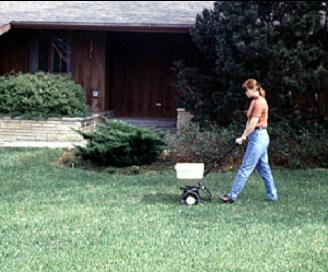
May is a good time to fertilize because the springtime flush of growth characteristic of these grasses has tapered off, so the fertilizer you apply will be less likely to cause excessive shoot growth than if you fertilized at full rate in April. Slow-release nitrogen sources are ideal. These nitrogen sources promote controlled growth, which is desirable as the stressful summer weather approaches. Relatively few fertilizers available to the homeowner supply ALL of the nitrogen in the slowly available form. But one such product that is widely available is Milorganite. Other such products available in the retail market include cottonseed meal, alfalfa-based fertilizers, and any other products derived from plants or animals. (Bloodmeal is an exception, and contrary to popular belief, the nitrogen it supplies is quickly available.) These products are all examples of natural organic fertilizers. They typically contain less than 10 percent nitrogen by weight, so compared to most synthetic fertilizers, more product must be applied to get the same amount of nitrogen. Translation: they are more expensive! Apply enough to give the lawn one pound of nitrogen per 1,000 square feet. For example, if the fertilizer is 6 percent nitrogen by weight, you will need to apply almost 17 pounds of fertilizer product per 1,000 square feet. Summer lawn fertilizers that contain at least a portion of the nitrogen as slow-release are fine to use as well. Be sure to follow label directions. If cost is prohibitive, you can use the less expensive quick-release (i.e., soluble) sources, but split the application into two doses as follows: apply enough to give the lawn 0.5 lb nitrogen per 1,000 square feet in May and again in early June. (Ward Upham)
Controlling Wild Violets in Lawns
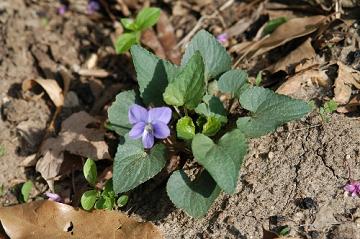
Both products listed above are labeled for tall fescue and Kentucky bluegrass. Do not use products containing triclopyr on bermudagrass as severe injury will occur. Weed-B-Gon Chickweed Clover & Oxalis is labeled for buffalograss and zoysia (Turflon Ester is not) but lawns will likely show some temporary browning after application.
Spray only on calm days and when temperatures are below 90 degrees to avoid damage to nearby plants. (Ward Upham)
Fruit:
Fertilizing Grapes
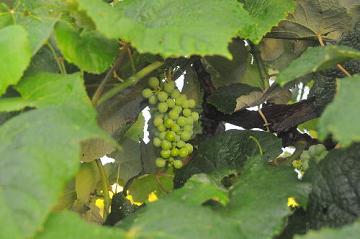
Second Year: Apply 1 cup of a 10-10-10 fertilizer per vine as growth begins in the spring. Fertilizers should be spread evenly from the trunk out 3 to 5 feet.
Mature Vines (3 years and older): If the soil test recommends phosphorus and potassium, use a 10-10-10 fertilizer at the rate of 2 cups per mature vine. Fertilizers should be spread evenly from the trunk out 3 to 5 feet. If, however, there are adequate levels of phosphorus and potassium, add 3/4 cup of a high nitrogen fertilizer such as a 27-3-3, 29-5-4, 30-3-3 or something similar instead of the 10-10-10. Though recommended for lawns, these fertilizers will also work well as long as they do not contain weed killers or crabgrass preventers. Fertilizers should be spread evenly from the trunk out 3 to 5 feet. (Ward Upham)
Fruit Tree Sprays and Rain
Vegetables:
Sweet Corn Primer
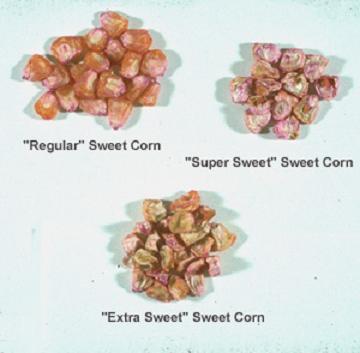
Standard (su): This is our “normal” sweet corn and contains a “sugary gene” (su). Standard sweet corn should be isolated from field corn, popcorn, supersweets and ornamental corn. To isolate one type of corn from another, do not plant one type within 200 to 250 feet or be sure to have a difference of 12 to14 days in time to maturity.
Plant when the soil temperature reaches at least 55 degrees. Recommended varieties include Honey and Cream, Silver Queen, Sterling Silver, Jubilee, or Merit.
Supersweet (sh2): Though supersweets have up to three times the sweetness of standard sweet corns and hold their sweetness longer after harvest due to the sh2 gene, they do have some drawbacks such as tougher kernels and a lack of some of that good “corn” flavor. They also need to be isolated from other sweet corn types and are very sensitive to cooler soils. Wait until the soil temperature reaches 65 degrees before planting. Try Candy Store, Florida Staysweet, Sugar Loaf, Sweet Time, or Sweetie.
Sugar Enhanced (se): These are probably the most popular type of sweet corn grown due to their tender kernels, good flavor and less sensitivity to cool soils (60 degree soil temperature for planting). They hold their post-harvest sweetness longer than standard types but will not hold sweetness as long as the supersweets. The sweetness from the sugar-enhanced types is due to the “se gene.” If both parents were se types, the variety is known as an se+ or se se. If only one parent was an se type and the other an su type, then the variety will be listed as se. They do not need to be isolated other than from the supersweets. Suggested varieties include Bodacious, Ambrosia, Sweet Temptation, Delectable and Miracle.
Triplesweet (synergistic): The newest types of sweet corns blend the su, se and supersweet types with the goal of combining the best characteristics of each. We don’t have firm recommendations yet but you may want to try Serendipity, Polka, Avalon or Frisky. (Ward Upham)
Miscellaneous:
Field Bindweed Control
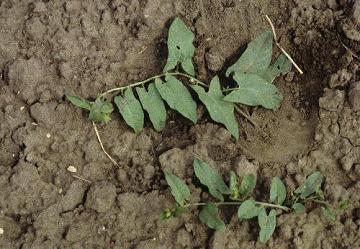
Home Vegetable Gardens: Weed control requires taking the treated portion of the garden out of production for a time.
Glyphosate - Glyphosate is sold under a wide variety of names, the most common being Roundup. Take the garden out of production when treating.
1. Glyphosate is a non-selective herbicide that will kill whatever it hits but is inactivated when it contacts the soil.
2. Glyphosate is most effective when applied to bindweed that is at or beyond full bloom. You can treat earlier but don't skip the late summer to fall application.
3. Do not apply to bindweed that is under moisture stress or not growing well.
Turf: Selective herbicides are available. A herbicide with the trade name of Drive (quinclorac) is now packaged in homeowner combination herbicides such as Fertilome Weed-Out with Q, Ortho Weed-B-Gon Max + Crabgrass Control, Monterey Crab-E-Rad Plus and Bayer All-in-One Lawn Weed and Crabgrass Killer.
Commercial applicators can also use Drive (quinclorac) as well as Q4 (contains quinclorac). Products with Drive work better than glyphosate and are selective. Note that lawns treated with Drive should not use clippings in compost or as mulch as Drive is very stable on grass clippings. We recommend clippings be returned to the lawn anyway but if they are bagged, they should be discarded. Do not apply products with Drive over exposed roots of trees and ornamentals. It would be best to avoid spraying beneath the canopy of any trees to avoid possible damage. If there are plans to convert a section of lawn to a vegetable garden, do not use Drive on that area. Eggplants can be damaged if planted within 12 months of areas treated with Drive, and tomatoes can be damaged if planted within 24 months.
Shrub Beds: Use a spray of glyphosate between plants. Use a shield if spraying near plants to keep spray from contacting green plant material. Remember, glyphosate will hurt your shrubs if it contacts green tissue.
It is possible to control field bindweed by pulling, but you must be extremely persistent. I remember reading a study from the 1940s that found that bindweed produces enough energy to start strengthening the roots when it reached the six-leaf stage. So, if pulling, never allow plants to produce more than six leaves. (Ward Upham)
Ornamentals:
Leaves and Seed Pods from Last Season Didn't Fall
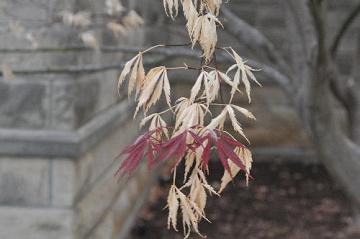
Though marcescence itself did not harm trees or shrubs, that quick drop in temperature did in certain cases. Various trees and shrubs such as Bracken’s Brown Magnolias and cotoneaster were winterkilled or damaged by the weather. In many cases, crapemyrtles were burned to the ground but may put up new growth from underground.
There is nothing we can do to help plants other than prune back dead branches and give them excellent care during the stress of summer by watering as needed.
There are not many people around who remember the Armistice Day freeze of 1940. It was far more severe that what we saw last fall. I remember my dad talking about how the temperature was in the 60's during the day and almost got down to 0 that night. Plants were not hardened off and the amount of damage was incredible. Most apple trees were killed outright. Let’s hope we never see that again. (Ward Upham)
Pests:
Asparagus Beetle
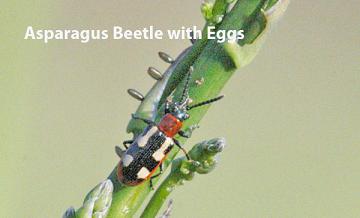
Early control of beetles is important to reduce feeding damage later. Sevin will provide control (a one-day wait before harvest is required). Some products with permethrin are also labeled but require a 3-day waiting period between spraying and harvest. (Ward Upham)
Brownheaded Ash Sawflies
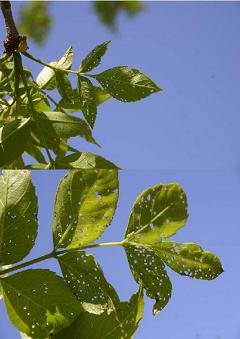
To treat or no-to-treat becomes an individual’s decision. Should trees become defoliated, they will rapidly recover, producing a flush of new foliage. (Bob Bauernfeind)
Contributors: Bob Bauernfeind, Entomologist; Ward Upham, Extension Associate
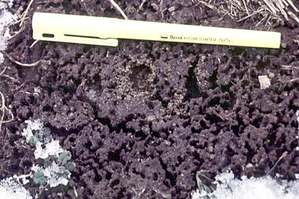
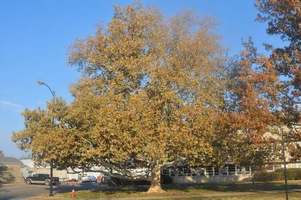
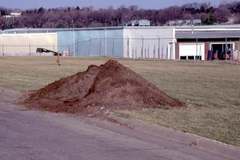
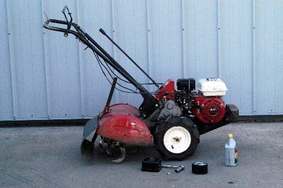
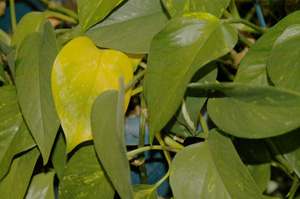
 RSS Feed
RSS Feed
